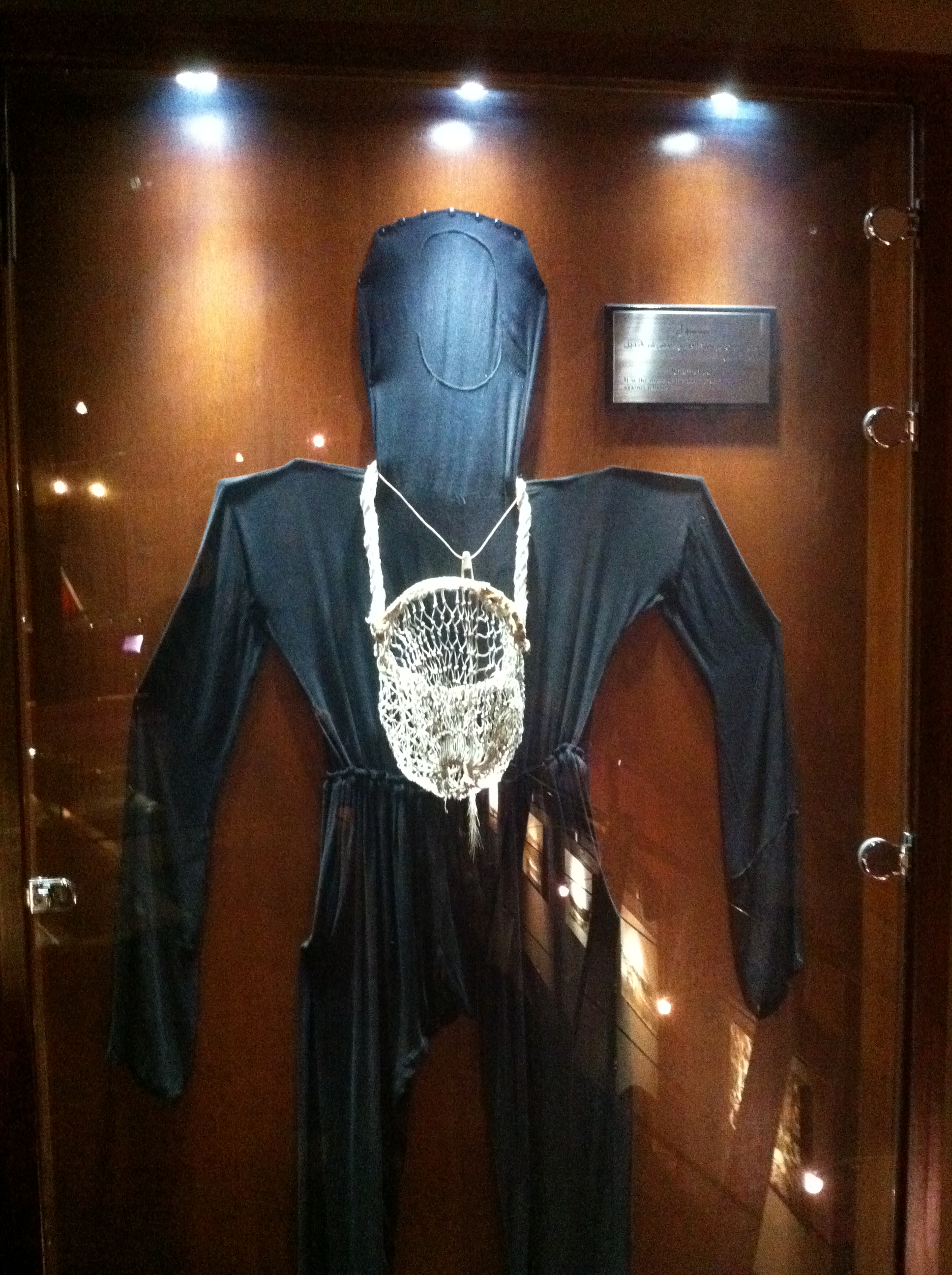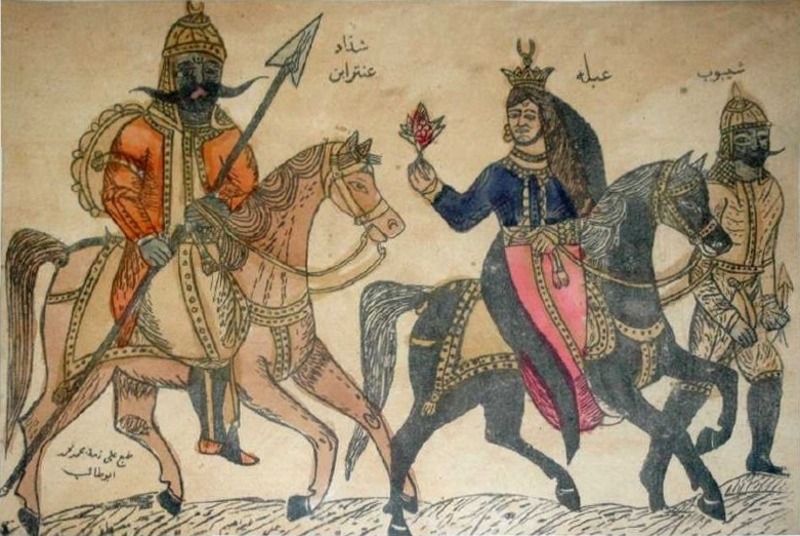|
Fijiri
''Fidjeri'' (Arabic: الفجيري; sometimes spelled ''fijri'' or ''fidjeri'') is the specific repertoire of vocal music sung by the pearl divers of Eastern Arabia's coastal Gulf states, especially Bahrain and Kuwait. A lead singer is backed up by a chorus of accompanying singers and clapping. The accompanying instruments to a ''fidjeri'' ensemble are a small double-sided hand- drum, known as the '' mirwās'' ( ar, المرواس) and the ''jāhlah'' ( ar, الجاهلة), a clay pot played with both hands. There are eight genres of fijiri: Sanginni (sung on the beach, not on the boat), Bahri, Adsani, Mkholfi, Haddadi, Hasawi, Zumayya, and Dan, the last two actually being subgenres of Hasawi and Mkholfi respectively. Bahri and Adsani are the two main genres. Pearl diver singers are referred to in Arabic as ''nahham'' ( ar, نهام). Salem Allan and Ahmad Butabbaniya are two of the most well-known fijiri singers from Bahrain. See also *Music of Bahrain The music of Bahra ... [...More Info...] [...Related Items...] OR: [Wikipedia] [Google] [Baidu] |
Music Of Kuwait
Kuwait is well known in the region for its exploration of many different and new forms of music and dance.Badley, Bill. "Sounds of the Arabian Peninsula". 2000. In Broughton, Simon and Ellingham, Mark with McConnachie, James and Duane, Orla (Ed.), ''World Music, Vol. 1: Africa, Europe and the Middle East'', pp 351-354. Rough Guides Ltd, Penguin Books. Kuwait is the birthplace of various popular musical genres such as sawt. Kuwait is widely considered the centre of traditional music in the GCC region. History Kuwait is the birthplace of various popular musical genres, such as sawt and fijiri. Traditional Kuwaiti music is derived from the country's seafaring heritage. In pre-oil times, Kuwait was regionally renowned for its music and 20–30% of Kuwaitis were professional musicians. Kuwait is widely considered the centre of traditional music in the Persian Gulf. Traditional Kuwaiti music reflects the cosmopolitan influence of many diverse cultures. The Habbān is a popular Kuwaiti ... [...More Info...] [...Related Items...] OR: [Wikipedia] [Google] [Baidu] |
Kuwait
Kuwait (; ar, الكويت ', or ), officially the State of Kuwait ( ar, دولة الكويت '), is a country in Western Asia. It is situated in the northern edge of Eastern Arabia at the tip of the Persian Gulf, bordering Iraq to the north and Saudi Arabia to the south. Kuwait also shares maritime borders with Iran. Kuwait has a coastal length of approximately . Most of the country's population reside in the urban agglomeration of the capital city Kuwait City. , Kuwait has a population of 4.45 million people of which 1.45 million are Kuwaiti citizens while the remaining 3.00 million are foreign nationals from over 100 countries. Historically, most of present-day Kuwait was part of ancient Mesopotamia. Pre-oil Kuwait was a strategic trade port between Mesopotamia, Persia and India. Oil reserves were discovered in commercial quantities in 1938. In 1946, crude oil was exported for the first time. From 1946 to 1982, the country underwent large-scale modernization, large ... [...More Info...] [...Related Items...] OR: [Wikipedia] [Google] [Baidu] |
Mirwas
The ''mirwās'' or ''marwas'' ( ar, مرواس), plural ''marāwīs'' ( ar, مراويس) is a small double-sided, high-pithced hand drum originally from the Middle East. It is a popular instrument in the Arab States of the Persian Gulf, used in '' sawt'' and ''fijiri'' music. It is also common in Kuwait and Yemen. Hadhrami migrants from Yemen took the instrument to Muslim Southeast Asia (especially Indonesia, Malaysia and Brunei), where it is used in ''Zapin'' and '' Gambus'' musical genres. A similar drum of this area is the ''Gendang''. The Marwas drums used to accompany '' Gambus'' music in ''Lampung'', ''Indonesia'' often consist of four sizes with two skins of a diameter between 12-20 centimetres. The skins are commonly made from goatskin and formerly black monkey skin and are laced with leather or plastic to a jackfruit-wood cylindrical body of around 8 to 10 centimetres in height. See also * Qanbus * Zapin References Double-skinned (double-headed) drums- Oman Centre ... [...More Info...] [...Related Items...] OR: [Wikipedia] [Google] [Baidu] |
Arab Culture
Arab culture is the culture of the Arabs, from the Atlantic Ocean in the west to the Arabian Sea in the east, and from the Mediterranean Sea in the north to the Horn of Africa and the Indian Ocean in the southeast. The various religions the Arabs have adopted throughout their history and the various empires and kingdoms that have ruled and took lead of the Arabian civilization have contributed to the ethnogenesis and formation of modern Arab culture.Language, literature, gastronomy, art, architecture, music, spirituality, philosophy and mysticism are all part of the cultural heritage of the Arabs. The Arab world is sometimes divided into separate regions depending on different cultures, dialects and traditions including: • The Levant: Lebanon, Syria, Palestine and Jordan. • Egypt • Mesopotamia (Iraq). • The Arabian Peninsula: Kuwait, Bahrain, Qatar, Saudi Arabia, Oman, Yemen and the United Arab Emirates. • Sudan • The Maghreb: Libya, Tunisia, Algeri ... [...More Info...] [...Related Items...] OR: [Wikipedia] [Google] [Baidu] |
Arabic Music
Arabic music or Arab music ( ar, الموسيقى العربية, al-mūsīqā al-ʿArabīyyah) is the music of the Arab world with all its diverse music styles and genres. Arabic countries have many rich and varied styles of music and also many linguistic dialects, with each country and region having their own traditional music. Arabic music has a long history of interaction with many other regional musical styles and genres. It represents the music of all the peoples that make up the Arab world today, all the 22 states. History Pre-Islamic period (Arabian Peninsula) Pre-Islamic Arabia was the cradle of many intellectual achievements, including music, musical theory and the development of musical instruments. In Yemen, the main center of pre-Islamic Arab sciences, literature and arts, musicians benefited from the patronage of the Kings of Sabaʾ who encouraged the development of music. [...More Info...] [...Related Items...] OR: [Wikipedia] [Google] [Baidu] |
Bahraini Music
The music of Bahrain is part of the Persian Gulf folk traditions. Alongside Kuwait, it is known for sawt music, a bluesy genre influenced by African, Indian and Persian music. Sultan Hamid, Ali Bahar and Khaled El Sheikh (a singer and oud player) are among the most popular musicians from Bahrain. Bahrain was the site of the first Persian Gulf-based recording studio, established after World War II. Modern music institutions in Bahrain include the Bahrain Music Institute, the Bahrain Orchestra and the Classical Institute of Music. The Bahraini male-only pearl diving tradition is known for the songs called '' fidjeri''. Liwa and Fann at-Tanbura are types of music and dance performed mainly in communities of descendants of Bantu peoples from the African Great Lakes region. Khaleeji Khaleeji is a style of Persian Gulf-area folk music, played in Bahrain with polyrhythms. The style is strongly influenced by the music of Africa. Khaleeji singer Ali Bahar is one of the few Bahrai ... [...More Info...] [...Related Items...] OR: [Wikipedia] [Google] [Baidu] |
Pearl Diving
Pearl hunting, also known as pearling, is the activity of recovering pearls from wild molluscs, usually oysters or mussels, in the sea or freshwater. Pearl hunting was prevalent in the Persian Gulf region and Japan for thousands of years. On the northern and north-western coast of Western Australia pearl diving began in the 1850s, and started in the Torres Strait Islands in the 1860s, where the term also covers diving for nacre or mother of pearl found in what were known as pearl shells. In most cases the pearl-bearing molluscs live at depths where they are not manually accessible from the surface, and diving or the use of some form of tool is needed to reach them. Historically the molluscs were retrieved by freediving, a technique where the diver descends to the bottom, collects what they can, and surfaces on a single breath. The diving mask improved the ability of the diver to see while underwater. When the surface-supplied diving helmet became available for underwater wor ... [...More Info...] [...Related Items...] OR: [Wikipedia] [Google] [Baidu] |
Liwa (music)
Līwa ( ar, ليوه / ALA-LC: ''laywah'') is a Khaleeji traditional dance of African origin performed in Eastern Arabia ( Arab states of the Persian Gulf), mainly within communities of descendants of people from the Swahili Coast (Tanzania and Zanzibar). It is also performed by the African-descended Sheedi community, as well as the Baloch of Makran Coast and Karachi area. Overview A large number of male participants arrange themselves into a circle, which is anchored by one or several drum players. A man paces in the middle of the group playing a simple reed instrument called '' mizmar'' or '' surnai'', whose plaintive sharp sound reminds the listener of an oboe. The circle claps and dances in place, while individuals join a line which rhythmically paces around the inside of the circle. The Liwa is a more casual dance than the others, and can be performed with great spirit and banter from the young men who usually take part. The three backing drums for this dance are the ''shi ... [...More Info...] [...Related Items...] OR: [Wikipedia] [Google] [Baidu] |
Sawt (music)
Sawt ( ar, صوت / ALA-LC: ''Ṣawt''; literally "voice"; also spelled sout or sowt) is a kind of popular music found in Kuwait and Bahrain. History It is said that sawt was established in Kuwait by the poet, composer, singer and oud player Abdallah al-Faraj (1836-1901/1903). The Bahraini historian Mubārak al-‘Ammārī believes that sawt was known in Kuwait before 1766, and in Bahrain since 1783. Saleh and Daoud Al-Kuwaity were widely considered among one of its earliest pioneers. Description ''Sawt'' is a complex form of urban music, originally performed by 'ud (plucked lute) and mirwas (a drum), with a violin The violin, sometimes known as a ''fiddle'', is a wooden chordophone (string instrument) in the violin family. Most violins have a hollow wooden body. It is the smallest and thus highest-pitched instrument (soprano) in the family in regular ... later supplementing the arrangement. Two men perform the dance, which is called “Zaffan”. ''Al-Sout'' is perfo ... [...More Info...] [...Related Items...] OR: [Wikipedia] [Google] [Baidu] |
Culture Of Eastern Arabia
There is a rich and ancient culture in Eastern Arabia. The culture in this region has always been oriented towards the sea. The semiannual tradition of Qarqe'an (قرقيعان) is deeply rooted in Gulf culture. The Eastern Arabian cuisine includes seafood (including mahyawa), harees, khubz and biryani. Other cultural features of the region include windcatchers (Badgeer) and Dewaniya. Overview Cultures in the region include those of Bahrain, southern Iraq, Kuwait, UAE, Eastern Saudi Arabia (Qatif and Al-Hasa), Qatar, and Northern Oman. Gargee'an Qarqe'an is an semiannual celebration, observed in Eastern Arabia, that takes place on the 15th night of Sha'ban and on the 15th night of Ramadan. Qarqe'an is marked with children dressing in traditional attire and going door-to-door to receive sweets from neighbours, whilst also singing traditional songs. The tradition has existed for hundreds of years and deeply rooted in Gulf culture. Although the celebration of Qarqe'an shares ... [...More Info...] [...Related Items...] OR: [Wikipedia] [Google] [Baidu] |





